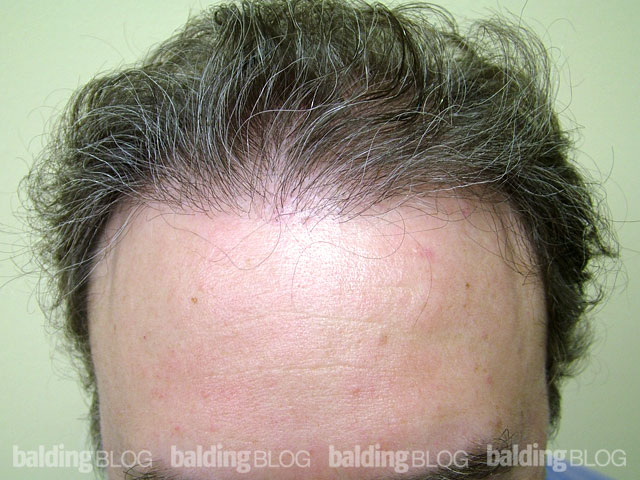Doc,
It appears that most of the hair transplant examples I’ve seen have tended to be transplants around the hairline (and hair combed back in most cases too) versus crown transplants. If one suffering from MPB were to undergo a hairline transplant and be on Propecia (for the crown) indefinitely, there will inevitably come a time (5+ years) when even the finasteride will wear out in terms of its effectiveness in keeping the crown hair. Does that mean that a series of hair transplants are required to “keep up” with the rate of hair loss overtime?
To give this question the respect it deserves, one needs to understand the natural progression of genetic male patterned balding. This is a progressive process that will eventually lead to a final pattern consistent with your genetically predetermined pattern. Look at the Norwood classification chart for hair loss and you will see a series of patterns. These can be the ‘end stage’ of the hair loss or they may be intermediate stages leading to a more advanced stage along the progression indicated in the Norwood scale. The problem is that you really do not know (for sure) where you will end up, but there are many ways to estimate where you might be by looking at:
- Your miniaturization map of your scalp. The final pattern may very well show some degree of miniaturization, even if you are not frankly balding yet.
- Your family pattern and see if you can identify (a) the worst case in the family or (b) the person whose pattern you believe you are following. Then you might be able to ascertain your final pattern (an educated guess).
If your final pattern is not the more advanced patterns (demand for hair) and if your hair density is adequate (supply), then you might be able to keep up with the progression of your balding as it is happening. If, however, the final pattern will be a Class 5, 6 or 7 pattern, you might not be able to keep up with the balding process with additional transplants because you may run out of donor hair (supply). The one clear point I wish to make is that you need to have a Master Plan to take in your worst case scenario and you must have a doctor who you can trust to work with you on that plan. The Master Plan has one objective and that is that no matter what happens, your hair restoration surgeries should always leave you with a natural appearance. Too many patients and doctors think in the short term, and think that the hair transplant will solve the problems of balding. That may not be realistic, so the relationship between the patient and the doctor is all important.
If you are having your first surgery when you are 24 years old and you are supposed to become a class 6 or 7 in the future, even though you are only a class 3 now, it is likely to assume that you need more than one surgery. On the other hand, if you are 35 and have almost reached the end of your hair loss process, you may be done with just one procedure and may never need another surgery. You have to understand that Propecia is not a permanent solution, but it does slow down the loss process in most men. Sooner or later, your hair loss will catch up until that final hair loss pattern is reached. Taking Propecia (Finasteride) may prolong the outcome, but the final pattern is probably inevitable.
Tags: finasteride, propecia, hairtransplant, hair transplant, hairloss, hair loss


